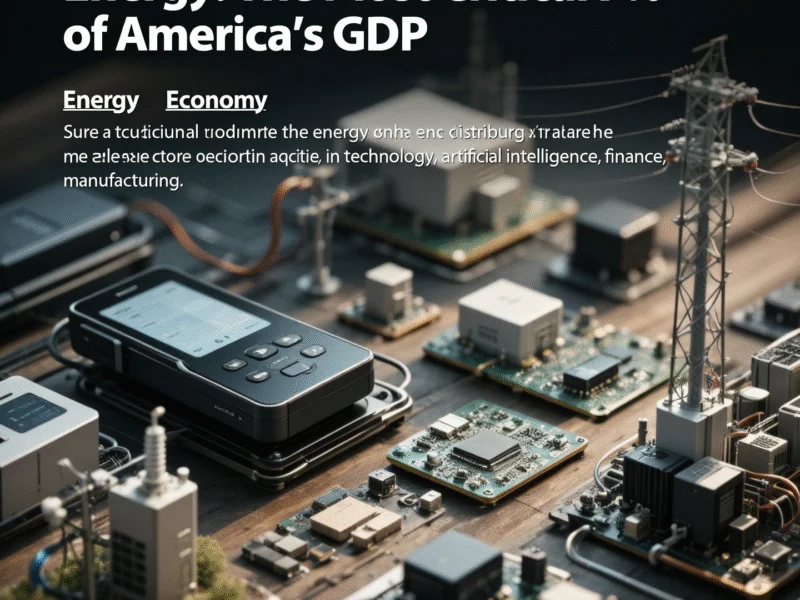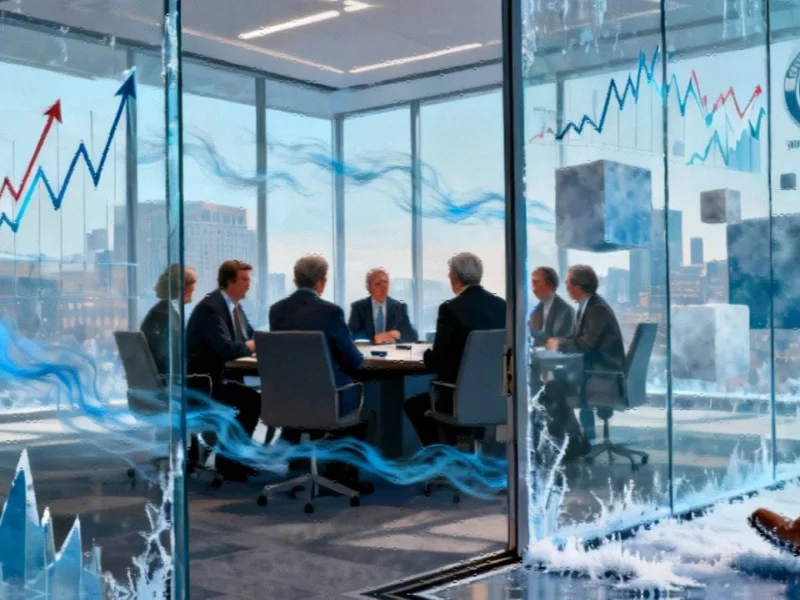Energy represents the most critical 7% of America’s economic foundation, powering every aspect of modern life despite its modest contribution to gross domestic product. According to former FERC Chair Mark Christie, now founding director of William & Mary Law School’s Center for Energy Law & Policy, “it’s the foundational 7%… everything else in our economy and lifestyle flows from it.” This perspective highlights how energy serves as the indispensable bedrock supporting the other 93% of economic activity, from artificial intelligence development to manufacturing and healthcare systems.
Why Energy Powers America’s Economic Engine
While energy accounts for a relatively small percentage of gross domestic product, its true value extends far beyond direct economic measurement. Contemporary civilization depends completely on uninterrupted, affordable, and reliable power. Without this foundation, finance, commerce, communications, healthcare, and transportation would cease functioning. The sector’s influence permeates every aspect of American life, from household appliances to streaming services and daily commutes.
Future economic growth initiatives face energy dependencies that cannot be ignored:
- Reshoring manufacturing requires substantial energy infrastructure expansion
- AI development and data centers demand unprecedented power resources
- Vehicle electrification depends on grid capacity and reliability improvements
Infrastructure Challenges at the Power-Digital Nexus
The intersection of power and digital growth presents a $2-trillion infrastructure challenge that will shape America’s economic future. Former Federal Energy Regulatory Commission Chair Mark Christie will address these critical issues at POWER’s Data Center POWER eXchange (DPX 2025), where he’ll outline reliability concerns, market design complexities, and cost-allocation stakes for utilities, hyperscalers, and regulators. Industry experts note that AI-driven power demand is straining existing infrastructure beyond designed capacities.
The American Society of Civil Engineers recently downgraded U.S. energy infrastructure to a D+ in their 2025 report card, highlighting:
- Aging grid systems requiring modernization
- Critical transformer shortages affecting reliability
- Supply chain vulnerabilities threatening resilience
Supply Chain Vulnerabilities and National Security Risks
America’s energy infrastructure faces significant supply chain risks, particularly regarding specialized components like transformers and capacitors manufactured overseas. Decades of offshoring production to reduce costs have created dependencies that threaten grid resilience. China now supplies most of the large power transformers essential to the national grid, creating strategic vulnerabilities.
According to recent analysis, when supply of these specialized components is compromised, replacement can take years due to manufacturing complexities and limited domestic production capacity. This dependency isn’t merely an economic concern—it represents a national security risk if foreign suppliers leverage their position to constrain access to critical grid components.
Additional coverage of technology infrastructure developments shows parallel challenges in other sectors, with related analysis highlighting how global supply chains affect various industries. Similarly, data from educational initiatives demonstrates how institutions are addressing workforce gaps in critical infrastructure fields.
The Path Forward: Securing America’s Energy Foundation
Addressing America’s energy challenges requires coordinated efforts across multiple fronts. Reshoring critical component manufacturing represents an urgent priority, as does modernizing aging grid infrastructure to support digital transformation and AI expansion. The reliability of America’s economic future depends on securing this foundational 7% of GDP that enables everything else.
As Christie emphasizes, energy isn’t just another sector—it’s the precondition for modern society and economic activity. Ensuring its reliability, affordability, and security requires recognizing its unique role and addressing the infrastructure and supply chain challenges that threaten its stability. The decisions made today about energy policy and investment will determine America’s economic competitiveness for decades to come.



